
views
What is a case study report?

A case study report is an academic publication describing an unusual or unique case. Academic medical journals publish case study reports to inform and educate other medical practitioners. Case study reports might also prompt additional scholarly research on the medical condition or treatment plan discussed in the report. Medical students or residents typically do the bulk of the writing of the report. If you're just starting your medical career, a case study report is a great way to get a publication under your belt.

Your report discusses the case presented by one patient. Take care to ensure the patient's anonymity. Only include details about the patient that are relevant to their case and their medical condition. Talk to your patient before you start writing and get their informed, written consent to write and potentially publish a case study report about them. If the patient is a minor or is incapable of giving informed consent, get consent from their parents or closest relative. Your hospital likely has specific consent forms to use. Ask your supervising physician if you're not sure where to get one. Some journals also have their own consent form. Check your target journal's author or submission information to make sure.
How is a case study report structured?
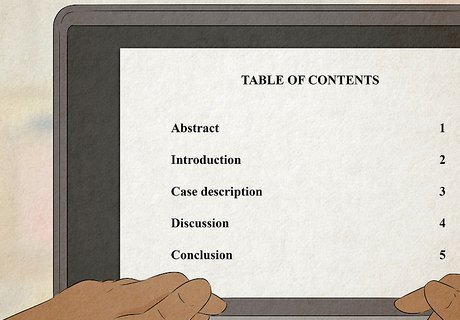
A typical report consists of an abstract, intro, case description, discussion, and conclusion. Of these 5 parts, the case description and discussion are the longest. The case description provides details about the specific case you encountered, while the discussion puts your case in context with reference to existing medical literature. Even though the introduction is the first part of a case study report, doctors typically write it last. You'll have a better idea of how to introduce your case study to readers after you've written it. Your abstract comes at the top, before the introduction, and provides a brief summary of the entire report. Unless your case study is published in an open-access journal, the abstract is the only part of the article many readers will see.

Check your target journal for possible variations. Different journals may have slightly different structures. Some may just want a bulleted list of summary points at the end, rather than a full conclusion. Some also might expect a separate "literature review" section, while others lump that into the discussion section. Many journals offer templates and checklists you can use to make sure your case study includes everything necessary and is formatted properly—take advantage of these! Some journals, such as BMJ Case Reports, require all case studies submitted to use their templates.
Drafting Your Medical Case Study Report
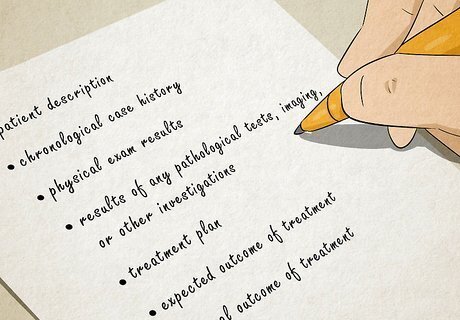
Pull all of the hospital records for the case. Since you won't be able to keep the originals, make copies of all the records you'll use to write your case study. Get documentation of the following: Patient description Chronological case history Physical exam results Results of any pathological tests, imaging, or other investigations Treatment plan Expected outcome of treatment Actual outcome of treatment

Write a draft of the case presentation. Organize the hospital records you've gathered and compose a chronological narrative of the case. Imagine that you're telling a curious colleague about the patient and write the case presentation down as you'd tell it. Information in this section might include: Why the patient sought medical help (you can even use their own words) Important information that helped you settle on your diagnosis The results of your clinical examination, including diagnostic tests and their results, along with any helpful images A description of the treatment plan The outcome, including how and why treatment ended and how long the patient was under your care

Research the existing literature on the patient's condition and treatment. Ideally, you'll do some searches on medical journal databases using keywords related to your case and find next to nothing. That's a sign that you've got a case rare enough to merit a published case study. You will need references to back up symptoms of the condition, common treatment, and the expected outcome of that common treatment. Use your research to paint a picture of the usual case of a patient with a similar condition—it'll help you show how unusual and different your patient's case is. Generally, aim for around 20 references—no fewer than 15, but no more than 25.
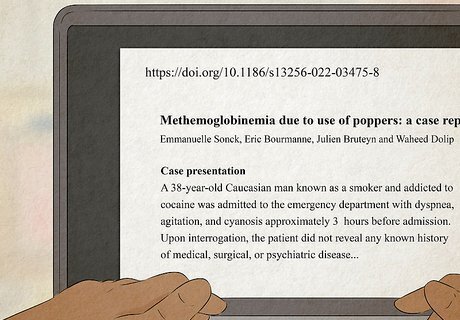
Write a section discussing the case in light of your research. Start with a literature review of a couple of paragraphs that just summarizes what you found in your research. Then, put your case in context by showing how it's different or wasn't anticipated by other researchers. Close your discussion section with a summary of the lessons learned from the case and why it's significant to consider when treating similar cases in the future. Outline any open questions that remain. You might also provide suggestions for future research.

Complete your introduction and conclusion after you've written the body. Since these sections summarize key points of your case study, it's best to write them last. The introduction gives a brief overview of the basic condition of your patient and the problem you'll address in your case study. The conclusion summarizes the key points covered in the case study. In your conclusion, you might also give suggestions or recommendations to readers based on what you learned as a result of the case. Some journals don't want a separate conclusion section. If that's the case for one of your target journals, just move this paragraph to the end of your discussion section.
Polishing Your Report for Submission to Publishers

Come up with a title for your case study. Think about what makes your case study interesting or why other clinicians might need to read it. Try to highlight that point in your title. Typically, titles include the words "case study," although it's not strictly required. Most titles are fewer than 10 words long and include the name of the disease or condition treated. You might also include the treatment used and whether the outcome was successful. When deciding what to include, think about the reason you wrote the case study in the first place and why you think it's important for other clinicians to read.

Identify the authors of the report on the title page. If you did the bulk of the writing on the case study, your name goes first. But you might include the names of other medical professionals who assisted you with your writing or research. For each author, include their institution and professional contact information. Include anyone as an author who: Made a significant intellectual contribution to the case study report Was involved in the medical care of the patient reported Can explain and defend the data presented in the report Has approved the final manuscript before submission for publication
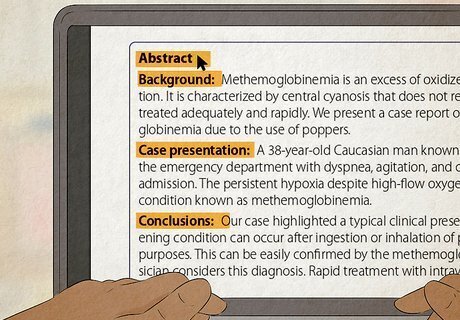
Write an abstract summarizing the entire article. Your abstract should be one of the last things you write—and it's often the most challenging. In about 150 words, provide readers with the nuts and bolts of your case study: the case itself, the problem it presents, and the overall message conveyed. Be patient with your abstract—it might take several drafts to get it right. Keep in mind that the abstract is not just going to be the first thing people read—it will often be the only thing people read. Make sure that if someone is going to walk away having only read the abstract, they'll still get the same message they would have if they read the whole thing. There are 2 basic types of abstract: narrative and structured. A narrative abstract is a single paragraph written in narrative prose. A structured abstract includes headings that correspond with the sections of the paper, then a brief summary of each section. Use the format preferred by your target journal.

Choose keywords that will help readers find your case study. Keywords are a tool that people use to find your article. Play around on the databases to find the best ones—the most popular keywords will typically get your article the most traffic. Look for keywords that are relevant to your field or sub-field and directly related to the content of your article, such as the name of the condition or specific treatments you used. Most journals allow 4-8 keywords but check the submission guidelines of your target journal to make sure.
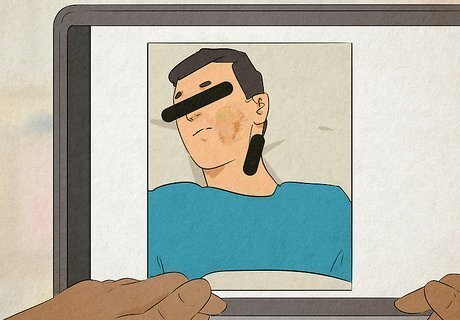
Obscure the patient's identity. Go back through your report and check for any details that might reveal the patient's identity. Be especially careful with images, which might include identifying marks. Blur out the patient's face as well as any tattoos, birthmarks, or unrelated scars that are visible in diagnostic images.

Include your acknowledgments and conflict of interest statement. Use your acknowledgments to thank anyone who helped you with your medical case study report. Any financial support is typically listed in a separate section under the heading "Financial support and sponsorship." All journal articles also include a statement that neither you nor any of the other authors have any conflicts of interest. It's common to thank the patient, but that's up to you. Even if you don't, include a statement indicating that you have the patient's written, informed consent to publish the information. Read the journal's submission guidelines for a definition of what that journal considers a conflict of interest. They're generally the same, but some might be stricter than others.
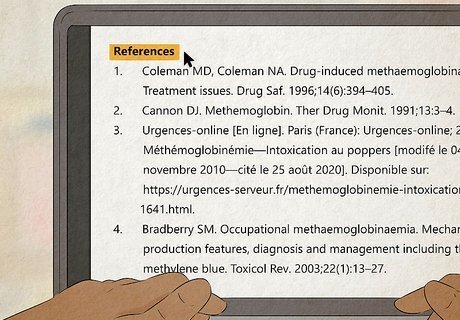
Compile and format your reference section. Use the citation style required by your target journal—if you're submitting to more than one journal, you might need more than one reference section. Pay attention to each journal's requirements and follow them exactly so your case study doesn't get rejected. If you're not familiar with the citation style used by your target journal, check online for a guide. There might also be one available at your hospital or medical school library. Medical librarians can also help with citation style and references if you run into something tricky—don't just wing it! Correct citation style insures that readers can access the materials you cite.

Get feedback on your final draft. Ask someone who's published case studies before for notes. It's likely you'll edit and revise your case study at least 3 times before you submit it for publication. A senior doctor's notes are invaluable when you're polishing up your writing. It's also a good idea to get a beta reader who isn't a medical professional. Their comments can help you figure out where you need to clarify your points. Read a lot of case studies published in your target journals—it will help you internalize the tone and style that journal is looking for.
Submitting Your Report to Publishers

Choose target journals that publish similar content. Think about the type of case you have and focus on journals with that specialty for the best results. Review the journal's archive and make sure it publishes case studies—not all of them do! Look into the background and reputation of journals before you decide to submit to them. Only seek publication from reputable journals in which articles go through a peer-review process. Find out what publishing fees the journals charge. Keep in mind that open-access journals tend to charge higher publishing fees. Read each journal's submission and editorial guidelines carefully. They'll tell you exactly how to format your case study, how long each section should be, and what citation style to use. For electronic journals that only publish case reports, try BMJ Case Reports, Journal of Medical Case Reports, or Radiology Case Reports.

Submit your manuscript according to the journal's requirements. Typically, you can upload your paper and any other documents online. The journal will notify you when your manuscript has been received and give you a timeline for the next steps. If your manuscript isn't suitable for the journal you submitted to, the journal might offer to forward it to an associated journal where it would be a better fit. When your manuscript is provisionally accepted, the journal will send it to other doctors for evaluation under the peer-review process. Most medical journals don't accept simultaneous submissions, meaning you'll have to submit to your first choice, wait for their decision, then move to the next journal on the list if they don't bite.

Revise your manuscript based on peer review comments. The journal will send you comments from the doctors who read your manuscript. Typically, you'll have the option to either revise your manuscript or offer a rebuttal of the comment based on other evidence or information you have available. Along with your revised manuscript, include a letter with your response to each of the reviewer's comments. Where you made revisions, add page numbers to indicate where the revisions are that address that reviewer's comments. Sometimes, doctors involved in the peer review process will indicate that the journal should reject the manuscript. If that's the case, you'll get a letter explaining why your case study report won't be published and you're free to submit it elsewhere.

Complete final copy-editing if the editors approve your article. If your article survives peer review, the editors of the publication are your last hurdle. They'll send proofs of your article along with any notes for editing. Some journals require you to have your article professionally copy-edited at your own cost while others do this in-house. The editors will let you know what you're responsible for.

Pay the article processing charge if your article is accepted. Open-access journals typically require you to pay a processing charge before your article is published. The charge varies widely from $550 to more than $2,000. With your acceptance letter, you'll get instructions on how to make payment and how much you owe. Take note of the deadline and make sure you pay it as soon as possible to avoid publication delays. Some journals will publish for free, with an "open-access option" that allows you to pay a fee only if you want open access to your article.

Sign your publishing agreement. This agreement outlines the representations you're making to the publisher as the author of the manuscript and the conditions of publication. Many journals have an embargo period, during which you aren't allowed to talk about or share copies of your journal article. Through the publishing agreement, you assign your copyright in the article to the journal. This allows the journal to legally publish your work. That assignment can be exclusive or non-exclusive and may only last for a specific term. Read these details carefully! If you published an open-access article, you don't assign the copyright to the publisher. The publishing agreement merely gives the journal the right to publish the "Version of Record."
How do I find a suitable case for a report?

Keep your eye out for unusual or interesting cases. Good case studies can be hard to find, but be on the lookout for unique presentations that have clinicians befuddled or responses that defy expectations. The best case studies illustrate at least one of the following: A rare disease, or unusual presentation of any disease An unusual combination of diseases or conditions A difficult or inconclusive diagnosis Unexpected developments or responses to treatment Personal impact Observations that shed new light on the patient's disease or condition

Discuss possible cases with your medical team. Since the goal of a case study is to inform other clinicians, your medical team can help you decide if the case you're thinking about would make a good article. Focus on the teachable moments—the aspects of the case that provided information you intend to use when addressing similar problems in the future. There might be other members of your medical team that want to help with writing. If so, use one of these brainstorming sessions to divvy up writing responsibilities in a way that makes the most sense given your relative skills and experience. Senior doctors might also be able to name some journals that would potentially publish your case study.




















Comments
0 comment